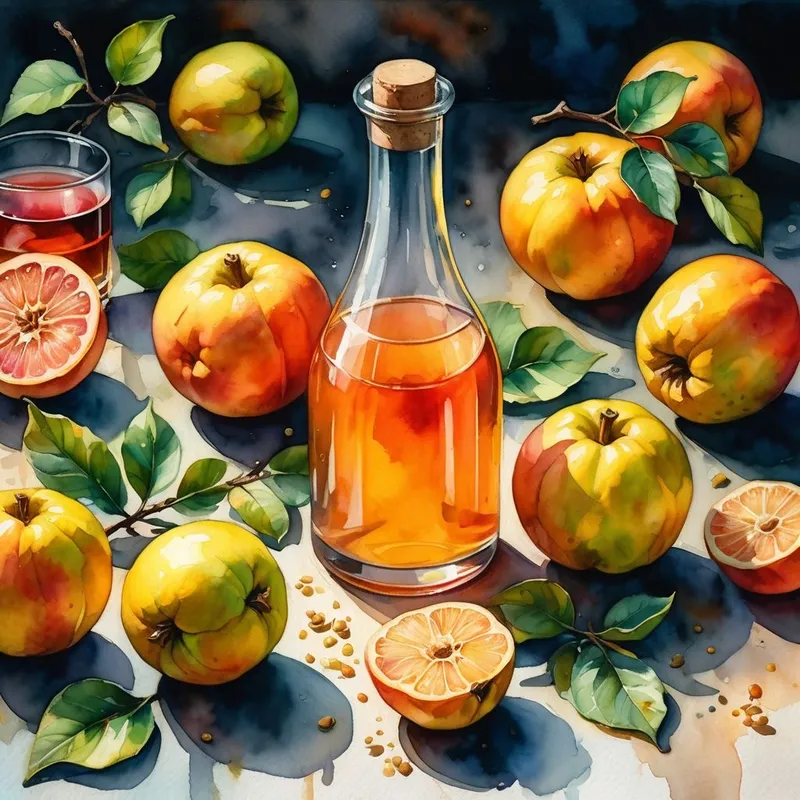Quince Wine

Experience the unique and aromatic flavors of quince wine, crafted from ripe fruit and brightened with citrus notes. This homemade elixir combines the richness of quinces with the zest of lemons and the warmth of orange juice, perfect for sharing during gatherings or enjoying a quiet evening. Unleash your inner vintner with this rewarding wine-making adventure!
ingredients
- 20 ripe quinces
- 1/2 cup orange juice (about 360 ml, room temperature)
- 2.2 pounds sugar (about 1 kg)
- 1 tsp yeast nutrient (about 5 g)
- 2 lemons, juice and zest
- 1 package wine yeast (about 5-7 g)
- 1 tsp pectic enzyme (approximately 5 g)
- 1 optional Campden tablet
steps
- 1.
Thoroughly wash the quinces and remove any blemishes. Cut them into quarters, leaving the skin on.
- 2.
In a large, sanitized fermentation vessel, place the chopped quinces and add enough water to cover them (about 3.3L total).
- 3.
Stir in the sugar, helping it dissolve in the mixture, then add the orange juice, lemon juice, and lemon zest.
- 4.
Sprinkle the pectic enzyme and yeast nutrient over the surface, giving everything a gentle stir.
- 5.
Optionally, crush and dissolve the Campden tablet into the mix to help prevent unwanted bacteria - wait 24 hours if using.
- 6.
After 24 hours (if Campden tablet was used), sprinkle the wine yeast over the surface without stirring. Cover the vessel with a clean cloth.
- 7.
Allow fermentation to take place at a steady temperature, typically around 70°F (21°C), for 7 to 14 days, until bubbling slows.
- 8.
Strain the mixture through a fine mesh or cheesecloth, transferring the liquid into a sanitized secondary fermentation container.
- 9.
Siphon the wine into bottles when fermentation has fully completed (about 4-6 weeks), seal, and age for at least 3 months before tasting.


